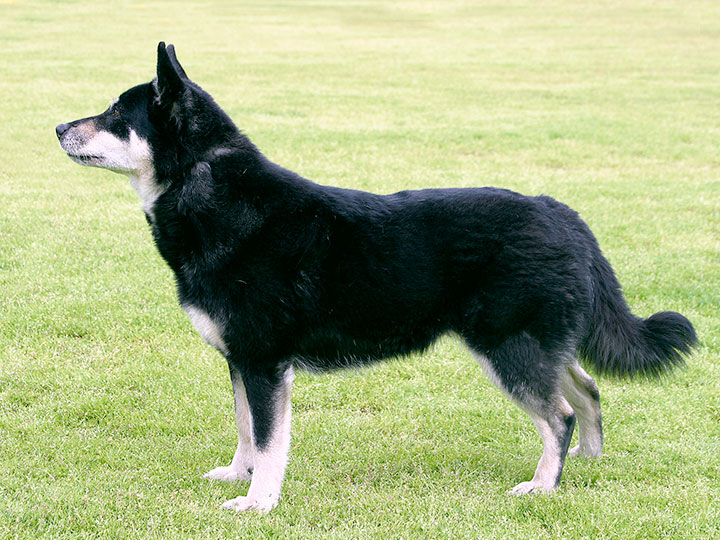It is thought that the Lapponian Herder (Lapinporokoira) evolved from dogs that have inhabited the northern parts of Scandinavia since pre-historic times. The origin of the breed is the subject of much debate, however, as the Lapponian Herder clearly deviates from traditional Spitz-type dogs.

The earliest information on reindeer husbandry in Lapland dates back to the 16th and 17th centuries and the first mentions of reindeer-herding dogs were included in the book Lapponia, which was published in 1674.
As a breed, the Lapponian Herder is centuries old. An effort was made to launch organised breeding in the late 1930s, but this failed to achieve visible results. Systematic kennel work extended to the breed only in the 1950s.
Two major threats to the reindeer herding dog can be identified in the history of recent decades. The first was the Lapland War, which was fought in the closing stages of the Second World War and destroyed a large part of all Lapponian Herders. The second was the proliferation of snowmobiles in reindeer husbandry. A revitalisation effort of the reindeer-herding dog population only began in 1959; the result was the Lapponian Herder, whose breed characteristics were confirmed by the Finnish Kennel Club in 1966. A new breed definition was approved in 1997. Today, reindeer herdsmen have learned to combine the best aspects of the snowmobile and the Lapponian Herder.
Approval for entry in working dog trials and the good health situation of the breed, among other things, have boosted the Lapponian Herder's popularity and annual registration numbers have been increasing over the last decade. A record 248 Lapponian Herders were registered in 2004.
Appearance and size
The Lapponian Herder is a mid-sized Spitz-type shepherd dog. Its length is clearly greater than its height and it has strong bones and muscles. It is muscular, but not stocky. The head is longish. The top of the head is slightly convex and the muzzle is a little shorter than the skull. The oval, dark and lively eyes are fairly far apart. The mid-length erect ears are fairly wide at the base and somewhat far apart. The tail is medium long, bushy and attached low. The coat is medium length or long and black, greyish or brown in colour. Markings, which are lighter than the overall colour, are usually located on the head, chest and legs.
The ideal height at the withers is 51 cm for males and 46 cm for females. The acceptable deviation for both is plus or minus 3 cm.
Breed registration statistics
Below you can find the registration statistics for the Lapponian Herder in the Nordic countries from 1990 onwards.
| | Finland | Denmark | Iceland | Norway | Sweden |
|---|
| 2015 |
254 |
5 |
0 |
31 |
65 |
|---|
| 2010 |
249 |
3 |
0 |
13 |
57 |
|---|
| 2005 |
238 |
23 |
0 |
0 |
62 |
|---|
| 2000 |
128 |
8 |
0 |
5 |
32 |
|---|
| 1995 |
81 |
0 |
0 |
0 |
2 |
|---|
| 1990 |
70 |
0 |
0 |
0 |
0 |
|---|